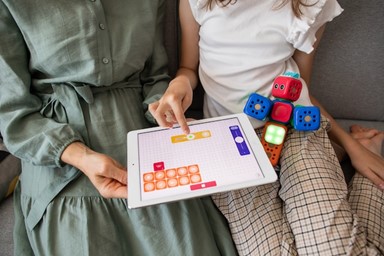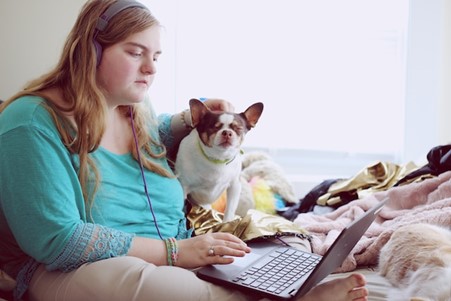
Dr. Benjamin Todd Eller of California is the owner and director of Best Practices, which is an educational institution that provides treatment for autistic and special needs individuals and parents. For close to 20 years, this organization has served hundreds of families providing behavioral intervention, discrete trial training and the latest scientific methods to help children and parents alike. In the following article, Dr. Benjamin Todd Eller discusses how these methods can build independence in individuals with Autism.
Otherwise dubbed self-care skills, independent living skills are functions people perform every day to maintain their health, appearance, and hygiene. Whether it’s brushing teeth, talking to cashiers, choosing weather-appropriate clothing, or cleaning the house, these are the most important skills humans possess. People with autism, however, often need extra support to learn these skills and achieve the autonomy necessary to live alone or with minimal support.
Dr. Benjamin Todd Eller of California explains that since everybody with autism is different, what works for one person may not work for another. That said, there are a few widely beneficial practical approaches experts implement to give their learners the best chance at living fulfilling, independent lives.
Dr. Benjamin Todd Eller Discusses Using Visual Support for Life Skills
People on the autistic spectrum tend to work best with visual resources, so many caregivers use them to support people through daily routines like brushing teeth, having a shower, using the toilet, getting dressed, and more.
According to the experts, First Then Boards are particularly useful. One side displays the word “First” followed by the activity (e.g., “Brush Teeth”), which is shown in text and images. The other side shows “Then” followed by another activity (e.g., get dressed).
Dr. Benjamin Todd Eller of California says that it’s simple yet effective, helping individuals with autism transition from activity to activity with more independence. The trick is to ensure the “Then” task is something that the person enjoys more than the initial activity. It forms the foundation required to fulfil directions with numerous steps and use more complex visual supports.
From here, caregivers can start visually setting boundaries around activities or items and communicating the basic expected behaviors. While useful in a plethora of situations, examples include:
- Using a “stop” sign to mark physical boundaries in a large area.
- Putting a “not available” sign on the computer when it isn’t screen time.
- Showing the need to wait for something by offering a “wait” card.
Providing Ways to Ask for Breaks
Dr. Benjamin Todd Eller of California explains that everyone has the right to request breaks when they need it, but those with autism may not be able to use spoken word as well as others. Therefore, caregivers must ensure their learners have methods in place to ask for breaks. This could mean putting a “Break” button on a communication device or adding a picture in a PECS book.
Alongside the communication avenue, people with autism must know where they can go to experience the break. Preferably, the area should be away from others and quiet to allow the individual to cut through the overwhelm and return to a calmer state. If a designated area won’t suffice, headphones or other tools ensure people can regulate sensory input and return to a comfortable level.
Dr. Benjamin Todd Eller of California says that despite seeming like a simple thing, those in the field emphasize that individuals who understand how to ask for a break allows them to regain control over themselves and their environment.
 Breaking Large Skills Into Small Steps
Breaking Large Skills Into Small Steps
Research notes that breaking bigger skills into small steps and focusing on each one is incredibly handy for teaching people with autism life skills. Professionally known as task analysis, the steps inside the aforementioned analysis are linked together, creating an easy-to-remember regime.
Dr. Benjamin Todd Eller of California says that all life skills can be cut into manageable chunks and formatted like a step-by-step checklist to give individuals a visual aid that’s easy to follow. For instance, a task analysis for putting on a t-shirt looks like this:
- Pick up the shirt.
- Put shirt over the head.
- Pull shirt to shoulders.
- Put right arm through right sleeve.
- Put left arm through left sleeve.
- Pull shirt down to waist.
- Straighten shirt.
Putting Money Skills Into Real-World Practice
Dr. Benjamin Todd Eller of California notes that money skills are integral for living independently in the community. Luckily, there are ways to teach money management for every level, with experts mentioning the most common is allowing learners to hand over money in a supermarket alongside the caregiver. As they progress, individuals can put their newfound skills to use in other settings.
Attending Social Skills Groups
Social skills groups often focus on a few core areas that help individuals interact with others appropriately. The main focuses are:
- Personal space
- Eye contact
- Conversation initiation
- Remaining on topic
- Taking turns to speak
- Sensitive topics
- Interest discussions
- Ending a conversation
Dr. Benjamin Todd Eller of California says that these groups are facilitated by various organizations, offering those with autism the chance to flex their social muscles in a controlled, judgement free zone.


